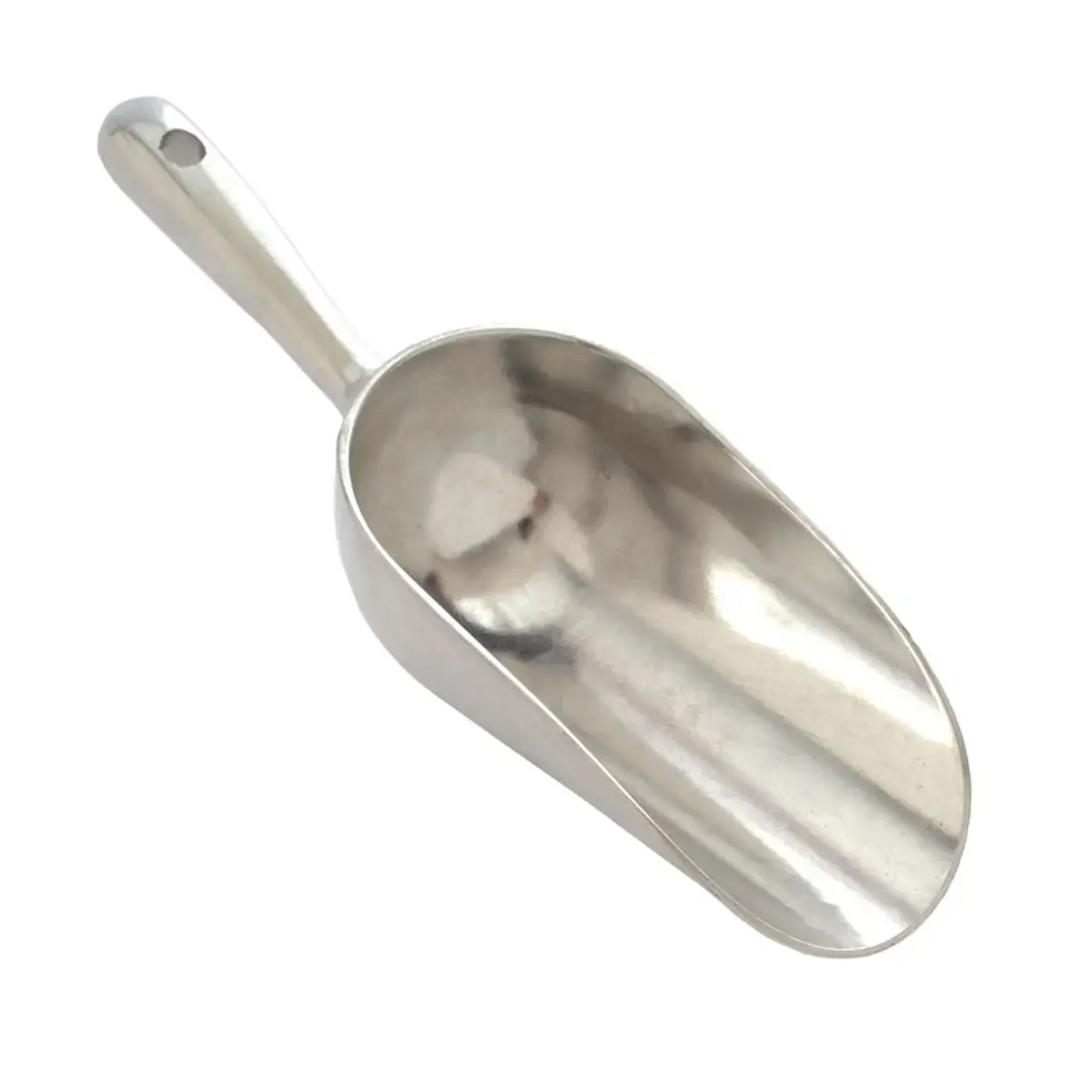Gas stoves fill the air in your home with particulate matter (pm), which has been found to increase cancer risk in the long term.
So next time you buy a stove, consider choosing an induction stove.
Btw, gas stoves being better or faster than induction is a myth. They have certain specific advantages, but they are actually slower.
Obligatory Technology Connections video:
https://www.youtube.com/watch?v=eUywI8YGy0Y
The studies I read, there was no ventilation / exhaust fan. The point was that low income households using these stoves often don’t have proper ventilation and it makes them dangerous. I didn’t find much evidence that using them with proper ventilation is actually a serious problem.
Further, cooking releases all sorts of chemicals from incomplete combustion in the air if something is burning, as well as the toxic chemicals release from nonstick cookware at very high temperatures, so cooking without ventilation is bad for your health would be the message I’d take away. I find most people are completely unaware of the hazard.
With proper ventilation you can do everything, you can work with hazardous gases and nuclear materials, if the ventilation is sufficient.
Radiation ventilation is fun to say
Radioactive particles perhaps but nuclear radiation is not affected by airflow
But if the flow is good enough, all the material will be sucked away before it has time to emit.
Considering how dense radioactive materials typically are (i.e. not likely to disperse in the air as a powder under typical working conditions) you’re talking about some hyperbolic extraction fan there :)
Very few residences have proper ventilation. In the US, a microwave above the stove is common. Microwave often do have a fan function, but the vast majority don’t vent outdoors. I doubt that running air through a very thin filter will do much good.
Even charcoal grills inside are fine with proper ventilation. So you’re right, but your also not saying very much.
Yeah I’m not sure what the purpose of the comment was. To convince people to continue using gas on the off chance it won’t increase cancer risk? That’s not a compelling reason to use gas. It might not kill me.
I’m pretty sure the comment was to emphasize the importance of a proper working stove hood.
it also emphasizes the importance of knowing how the items built into your house work.
I’m not even sure I would call it “low income households”, more like “older building/houses”. Plenty of expensive apartment units are in old buildings (I’m looking at you NYC) without proper ventilation.
I own a unit in a co-op in a building that is over 100 years old. I have a gas stove. There is a vent on my above-range microwave but it’s just a filter that blows it back into the room. I do a lot of cooking. I’m in danger.
Indeed. Charcoal filters are to catch some odours, the aluminum will catch some grease, but ‘natural gas’ is a whole lot more than methane, and think the same is true for propane.
Thanks for the clarification.
Gas stoves without extraction are also a lot more likely to use a liquefied gas fuel (i.e. bottled butane/propane) rather than a plumbed in utility gas mains (typically methane) which makes a big difference in particulate emissions during combustion
the maillard reaction causes cancer. I’m still not boiling my beef.
Photons cause cancer so I guess I may as well do nothing at all.
I mean photon is a pretty broad category so I’m not sure if you’re saying that gamma rays cause cancer or 5g does.
The few times I have prepared meat while trying to minimize the maillard reaction, it was still quite tasty.
That said, I agree that cancer risk is relative, and you can’t avoid all risk, even if you are happy to try.
I hear sous vide steak can be quite tasty.
I hear sous vide steak can be quite tasty.
It is the best way to prepare steak, but you still need to sear it afterwards. The steak can be cooked to a perfect medium-rare all the way through… But you still need to throw it on an ultra hot skillet with some butter and rosemary afterwards, to add the crust to the outside.
The information I have says sous vide is not as good as a “standard” reverse sear in an oven. But, I haven’t tried either.
My experience is that the “crust” on meat is entirely optional, and while I don’t aggressively avoid it, I don’t seek it out when I am preparing my own meat.
I have tried both, and can confirm that sous vide is superior. With a traditional oven prep, you get a pink rare center and brown medium-well outer edge. With sous vide, you get a perfect light pink medium rare all the way through, with only a thin edge of brown from the sear. With sous vide, you just sort of roll it across the skillet on the way to the plate, to get that crust but avoid cooking the interior more.
But to be clear, if you skip the sear with sous vide, your steak will be pink. You’ll miss out on a lot of flavor and mouthfeel from the sear. Sous vide technically cooks the meat, but doesn’t cause any browning (at least, not when cooking it to medium rare) because there isn’t enough heat to cause the Maillard reaction.
Since the Maillard reaction and all its VOCs are the most likely source of meat-related cancer risk, I will gladly eat pink (but safely cooked) meat. In fact the center pink bits are my favorite parts a traditionally cooked steak / prime rib.
You can also minimize the maillard reaction by not eating meat. Just putting it out there.
Oh, my primary diet is beans, quinoa, nooch, and almond milk. Snacking is popcorn with, evoo, and Kernel Seasonings ™.
I still eat meat not infrequently, but not everyday, and I rarely prepare it for myself. Still, I should avoid it more. It’s unnecessary, and even just a couple of years ago, I ate it less of it.
The food I cook for my family does involve the maillard reaction for some of it (salmon patties, roasted veg, french fries, lasagna, pasta w/ meat sauce). I pressure cook the chicken and rice, so I think that mostly avoids maillard. I only eat on the family food to clean it out of the fridge when I don’t think it’s worth serving to anyone else.
Thank you for your concern.
idk - there should be some very clear cancer statistics to back up such a claim between countries like Sweden (<1% gas stoves, all are electric) vs other countries then.
One cause of cancer like this probably won’t be visible on a national scale, too many other factors come into play that will muddy the data
However, it’s not “idk”, the current science on gas stoves being bad for your health is quite clear. Not just cancer, but also for other lung-related issues like asthma: https://www.cancercenter.com/community/blog/2024/09/are-gas-stoves-bad-for-your-health
You’re right - the report they link to here (Table 2 is good) makes that quite clear.
I read that running an extractor hood mitigates the risk a fair amount. Not completely, but enough that you shouldn’t worry if gas is your only option
Since this article is specifically about pm 2.5, I’m going to chime in and say I have a gas range with no extractor, and the only time my pm2.5 sensor picks anything up is when frying generates smoke and oil aerosols. That’s more a function of cooking temperature than fuel, and my induction hotplate will generate just as much.
CO2? Definitely more with gas. Trace chemicals? Probably more with gas, but all the studies I’ve seen are just about running the cooktop, with no food, in a sealed room. Run the extraction hood or open a window when you cook - it’s not just heat source.
Many people don’t turn the hood on until food itself is creating a lot of vapor because they are usually so noisy. Meaning the hood often helps very little in practice, although in theory you are right.
Or they have a fan that just redirects the exhaust into the house
My stove has a “hood”/fan that runs through the microwave and into a cabinet and that’s it. What can I do? After reading all this I intend to keep the window open nearby when cooking, and I always have two large air purifiers running in the living room attached to the kitchen.
For a lot of these large scale, epidemiological findings, it’s important to remember that the effects are small enough that you pick them up on a population level over a lifetime. I’d say that if you can, find a way to properly vent your stove outside if you are doing some home improvement. If you are replacing your stove, consider induction instead, and in the meantime, having an air purifier is good. Opening a window is probably also good. Other than that, I wouldn’t be super alarmed. Obviously, if you have little kids or something, you might have a lower tolerance for potential pollution, but it’s good to think about these things in context. Alcohol causes cancer, but everyone still drinks.
Thank you, that is a great answer that helps me both feel better and take steps if necessary. 10/10 would ask again.
Edit: sorry I know this sounds sarcastic but I really am grateful.
I’ve turned mine on, even if only on low, as I light the stove since first reading about this, but I think I’m a little more fact-absorbent than most people
It’s completely baffling that there are people unironically still defending gas stoves in 2025. There’s no discussion to be had on the subject any more, induction is superior and that’s final.
I would agree in places with good infrastructure. I lived somewhere with rampant power outages, sometimes for 5 days at a time.
Gas was sure nice then.
I think the people who claim gas stoves are best likely grew up either not cooking much, or had a decent gas stove, so their first exposure to an electric stove was super cheap, crappy electric coil stoves in student housing, or wherever they first lived as a young adult. Then when they were able to afford better, they got a better gas stove.
I have a really crappy gas stove, and it makes me yearn for the cheap electric coil stoves of my youth.
People say that gas stoves are more powerful and responsive, when the truth is that more powerful stoves are more powerful, and “responsiveness” is a fake concern. My crappy gas stove takes forever to get a pot of water boiling, especially compared to coil stoves. Yeah, you can turn a gas stove to 100% quickly, but that’s only better if it can put out more power. It won’t heat up any faster than an electric stove if the electric stove takes double the time, but also has double the power. There’s also not many cases where “time to maximum heat” is what you care about, I can’t think of any.
Responsiveness the other way (hot to cool) doesn’t matter when you have a high thermal mass in the pan (or the pan itself has high mass), it only matters when the pan and contents are light, in which case, you just take the pan off the heat.
The way coil stoves cycle their power on and off is incredibly dumb IMO.
Induction cooktops don’t do that, but it blows my mind that it took as long as it did to get a duty cycle frequency somewhere above ‘once every 30 seconds’.
In places where natural gas is cheap and electricity is expensive cost is a factor
When the power goes out in sub zero temperatures, and your heating does too, it helps to be able to make hot water on the stove to warm up.
Otherwise, yeah induction is better.
A $50 dual burner camp stove solves that (or even cheaper, a $12 single burner backpacking stove if you have less space).
While you’re correct in general, in places where the power is out for a week, a camping/backpacking stove would be ill-suited to the task of keeping multiple people warm and fed. Especially in a house and not an apartment.
A gas furnace won’t keep you warm when the power is out, either. I will say a camp stove feeds just as well as a regular stove, after all, how often are you using more than 2 burners simultaneously?
A gas (or wood) stove will, which is why they’re still common in rural areas that face power outages more frequently. Your comment is the first mention of furnaces.
Personally, I use more than 2 burners pretty often. Honestly, it’s a bit of a waste of everyone’s time to debate whether or not a camping stove is a universal replacement for a gas stove since everyone has different needs. For the scenario I described, a gas stove is the better option.
I would be pretty pissed if I had to use a camping stove instead of a gas stove during an outage just because. They’re totally different tools suited for different use cases and environments.
Yes, look at what happened in New Hampshire last winter with an historically extreme cold snap that caused power outages. It was so cold that many cars refused to start. If you were depending on electric heat only, you may very well die, not even able to make it to a neighbors house before dying.
Typically those shouldn’t be used indoors though, right? Usually a gas stove will have ventilation, but no gas stove, then likely not enough ventilation and you’ll need to step outside or crack a window to cook with gas.
My manual says:
DO NOT USE IN CARAVANS, TENTS, MARINE CRAFT, CARS, MOBILE HOMES OR SIMILAR LOCATIONS
So i guess you can use it indoors, but I definitely don’t.
Also, gas stoves increase the risk of asthma.
Yes, a little bit… Burning any kind of fuel in your home is going to produce carcinogens.
But it’s really nothing to get too excited about, and cooking on electric is bullshit
As other people have said, induction is alright. Way better than traditional electric anyway.
More than alright, it’s amazing
Yeah, I prefer my gas stovetop than any crappy induction.
Have they reinvented buttons yet or do you spend your time long-clicking and watching out not to short the touch-screen-top with 1 drop of water?
Jesting aside, induction is probably good but the bullshit that gas stoves causes cancer is just an unfounded lie. It’s like being scared of the microwave owen or “3G mobile”.
I think you’ve confused coil for induction, and gas stoves definitely cause cancer. So do cars.
Show me some propf of that, a scientific study. Make me change my views.
It depends. A really good induction stove is fine. The cheap ones they put in rentals are all really annoying though. Bad UI is my main gripe with them honestly.
I think they are more than fine but bad UI is real
I used to be 100% for gas ranges. Except for a couple of specific usecases, my 200v induction stove is great. I have a separate cannister gas stove if I want to really go to town on a wok or something. I’ve been converted.
we have a decent quality induction range and electric stove and we’d never bother considering to go back to gas
I think that’s the thing though… You need to invest in a really good quality electric cooker to get something decent… Whereas any old?Cheap gas appliance will get the job done.
Plus every electric hob I’ve ever used has got bullshit touch sensitive buttons that don’t like wet fingers.
yes…why cant dials
I remember reading a study on this where all the scientists replaced their home ranges because the results were so bad.
There are two kinds of electric. Induction, and coil. Are you talking about induction or coil?
Cooking in electric is fine, just different. I had an exposed coil stove for a while which was passable, but my glass top coil range is rather good. I grew up on gas and honestly my only complaint about electric is a bit slower heating time and it doesn’t react as fast as I’d like, but it’s not nearly as bad as people like to claim.
This just in… Sunlight causes cancer! Exactly why I have this big scab on my cheeks. Get screened folks, especially if it runs in your family
Yes, but…
Cooking itself also does this. If you are searing or frying that will also release dangerous particulates. Make sure you have and use a vent hood that vents outside the living space when you cook regardless of fuel.
I can say from personal experience of using every kind of home stove, that gas is both the worst and slowest. Boiling water for my morning coffee is fastest on induction, which takes about half the time as resistive or radiant electric, and gas takes nearly three times longer than that.
Though it might just be the american style of burner that directs the flame away from the center of the pan. I’ve not yet tried any other kind.
How lomg does boiling water with a good kettle take? It takes like 60s to boil water for me.
What heat source are you using? In my experience induction about matches electric kettles.
In poland before kettles, we used to boil water using gas and that always took ages
We swapped out a gas for induction, it’s amazing to be able to put the temp down below very hot. Also very responsive to power changes, and can wipe clean.
I love my induction hob for all the reasons you mention. It is by far the best hob I’ve used - much better than gas - and I cook a lot. The only slight downside is ensuring you have the right pans, but they’re widely available. My enamelled cast iron casserole pot works a treat.
Everything else being equal, of course electric and induction stoves are preferable to gas. I spend most of my life with an electric stove, no apartment I ever saw had induction, but I didn’t particularly like the gas stove I had to use for some years.
But if you want the worst user experience ever, find an electric stove with touchscreen controls. What the hell, landlord, where did you even find that one?
Having only cooked on radiant electric and gas, I gotta say I prefer the experience of cooking on gas, but not by enough to accept the documented risks, even if they are small. I hope at some point I’ll be able to have an induction range top as my primary.
The only thing I know gas stoves to be better at than other methods is traditional wok. But that’s hardly a reason to jeopardize your health for.
You can actually get induction wok thingys.
The induction magnet is bowl shaped, so that when placed in it, the wok is heated all over.
They work, but apparently the really good ones are priced for business kitchens.
Cool, had no idea this existed.
I’ve got one, just a 120V, home-use thing, but it gets far hotter, faster than on my stove. Tends to have a cool spot in the very center, maybe 3" diameter, unless you circulate the wok, and you can’t flame food by tossing it in the fire (which you can’t really do on a residential stove, either). It’s a decent approximation of a wok jet for home cooks.
If you really want to
burn your house downflame your home wok, you can always get a handheld blow torch to do the finishing ignition. Could probably flame 1000 wok dishes for a single torch canister.
Only if you have the proper high btu burner
Exactly this. I went from a cheap gas stove to a nicer induction and my work cooking has improved greatly.
Which most people don’t. Also I could buy a portable gas burner suitable for a wok and gas canister for less than the standing charge of gas for a year. Unless you are using a wok extremely often its not worth it.
I don’t have a wok, high temperature cooking would be nice for a few things like searing steak though. But that can be done over a BBQ. Kinda want to try heating a cast iron griddle when the coals are still orange hot and searing steak on that. Although steak isn’t something I cook very often partly because its really expensive. Presumably a fair bit less cooking time than the packaging recommends. I guess get the iron hot enough for the leidenfrost effect to start and then cook until nicely brown on each side and then take off the heat? With hot charcoal that would probably be something like 30-60 seconds each side.
I’ve been looking into a Wok-Pan for my glass top stove or my induction heater. I wonder how well those work.
Since this is the stove thread:
I had a pot of salt water overflow from boiling on a electric stove and now there is this tough ring of residue around the burner caked on and it won’t scrub off. Is using a razor blade to scrape it off really the only option?
I’m worried I will scratch the stove top and the landleech will have an excuse to steal my security deposit.
Edit: thank you all for your helpful advice
I mean… paying for shit you damaged during your stay is kind of the point of a security deposit.
I’ve used a razor for really stuck on bits on our glass top stove, but this cleaner also seems to do quite well: https://weiman.com/glass-cooktop-cleaner-polish
For the razor, keep it at a shallow angle (I tend to go around 20 or 30 degrees above the stovetop), and keep a small amount of water on the surface. I usually have a damp rag that I wipe the razor and stovetop with occasionally during the scraping process, to remove the small pieces that come off.
Also, if you are nervous about damaging the stovetop itself, maybe try something only lightly abrasive and warm water, and let the water work it’s magic. (I see you have already tried this, so maybe that isn’t helpful :/ ) From a chemistry perspective, salt water shouldn’t exactly leave behind an insoluble residue, but IDK what else was cooking in the water.
Bartender’s Friend or Pink Stuff should take it right off.
*Bar Keepers Friend
BarTenders friend is really the best for everything in the kitchen, but leaving some CLR on it overnight should break it down enough to clean up with a warm sponge. Calcium is probably the white stuff.
I legit used car polish once to clean my electric glass stovetop
Works fine as long as you work it by hand and wipe the residue off with a wet rag
Magic eraser might be worth a shot. Melamine foam is the generic name for it and you can get a ton of it cheap. It destroys stains easily. Even if it doesn’t handle the burner stains I highly recommend it for cleaning around the house anyway.
Nothing stopping you from using diluted lye / oven cleaner and wiping it off, just be very sure you take the necessary precautions. Do not breathe that shit in or let it get on your skin.
as long as you’re careful, it will be fine. been using a razorblade on them my whole life
One thing I like about gas stoves is the ones with sealed burners are a hell of a lot easier to get clean-looking than the glass tops of electric stoves. They get nasty so quick I prefer the old-style coil ones.
For your problem I’d try soaking a paper towel in CLR cleaner. It’s probably lime from the water and not salt.
gas stoves being better or faster than induction is a myth. They have certain specific advantages, but they are actually slower.
If you have 380/400V 16A induction, it’s not even close.
But be careful, if you have ceramic coated pans for instance, and you use the high power settings to heat it up, your pans won’t last long, as the ceramic may crack because of the fast heat up. We lost 2 pans that way. 😋
We also had a cheap cooking pot, where it developed a crack between the main pot and the apparently cheaply attached heat spreading bottom.
This made the pot sputter because water was collected in the crack when washed.
When I boil eggs, i time it from the moment the water is boiling. But with out new stove, the water boils so fast, I’ve had to add 2 minutes to the time they boil!!Our electric kettle is 2.2 kW. But boiling a liter of water on the stove is still more than twice as fast!! Meaning the stove must be putting more than 4.4 kW to the pot, on the smallest cooking spot!!
Obviously that is only possible for 1 spot at a time, I figure the max must be around 6kW combined.
They have certain specific advantages, but they are actually slower.
I can’t think of any advantages, gas stoves are slower, they are harder to clean, they give off an insane amount of wasted heat, which is uncomfortable in hot weather, and they noticeably degrade air quality unless you have very good ventilation.
The only possible advantage I can think of, is that you can use cheaper equipment on gas. but not always, because non metal handles tend to get ruined on gas stoves.
All in all induction is superior. 😎
If you have 380V 16A induction, it’s not even close.
Is that a common setup? That sounds very high-powered
This is very common in Denmark, and I suspect in much of Europe.
This is commonly used for stoves, ovens, dishwashers, dryers and washing machines. 30 years ago it was vastly dominant.
But today most 380/400v equipment can also run on 230/240v (2 phases instead of 3). Many now use standard 230/240v because most equipment has become more power efficient.PS: Apparently we actually have 400v for 3 phases. So our stove is 400v. I just chose the lower number to not exaggerate.
I’ve tried to find out why both numbers are used, and all I can find is that it’s due to regional differences?I checked mine, which is a fairly basic model, and it’s actually 400V.
Just FYI, I have gas heated water, and a gas stovetop. So I get around 55°C water to start, and the big burner is 5.5kW.
Still use lukewarm water in my kettle for tea. I mean what’s the hurry?
Cooking isn’t just heating stuff as fast as you can, what a curious thing to consider.
and the big burner is 5.5kW.
Yes, but there is enormous waste of heat with a gas stove, so your 5.5 kW big burner, is only equivalent to half of that compared to induction. Our smallest plate at 4.4+ kW is more powerful.
Cooking isn’t just heating stuff as fast as you can, what a curious thing to consider.
That’s a straw man argument, I never claimed any such thing.
But the fast response time makes it easier to adjust correct temperature/levels, and this was for many years a major argument from users of gas, but this argument is completely irrelevant now.
I also mentioned other drawbacks of gas.PS: I NEVER use preheated water for cooking anything, preheated water is generally not meant for consumption. It needs to be designed for that specifically, so unless your preheated water is guaranteed food grade, you shouldn’t use it.
About the strawnan, the discussion was about heating twice as fast with induction, sorry you got caught in the crossfire.
Also, I’m not talking about pre-heated water (bleurk!), I have gas heated water, it heats on demand, so my thé is ready 20 seconds faster than yours! /Jesting
I’m just curious about almost a cult following about induction heating, yes it’s better than almost anything else, but like only my Scandinavia friends has it or talks about it, my French and Italian friends usually don’t or when they do I know because I see it in their kitchen, and with them I talk food, what I’m cooking, what they’re cooking, how to cook this or that, not how fast I can warm water.
No ill intent meant, it’s just so strange for me :-)
gas heated water
In the 60’s and 70’s we also had a gas heater for hot water, and that heater was definitely NOT suited for drinking water, as the pipes the water was heated in were copper.
The heat source is not the important thing, it’s how it’s designed and the materials used. It needs to be positively approved as food grade. By preheated I mean heated before it comes out of the tap.only my Scandinavia friends has it or talks about it
IDK why that is? But I’m Scandinavian too from Denmark, so there you go. 😋
my French and Italian friends usually don’t
AFAIK induction was under patent protection for a long time, and that patent was held by a French company. French stoves are nearly non existent here, it’s all local, German, Swedish, Italian, British or Spanish.
Maybe Induction was cheaper in the past in France and Italy? It only recently (about 10 years ago) became dirt cheap here, as in costing basically the same as the alternatives.
I remember back in the 80’s inductions was about 2-3 times as expensive as a quality stove that was not induction. So Halogen (the ones with red light) were dominant for many years. And also pretty good, but not quite as good as gas for cooking. But convenient in other ways.not how fast I can warm water.
It’s not a big issue, but coming from Halogen it clearly changes the way you use your stove, because it’s so much more powerful and responsive.
About how much faster it is, I had a debate with my brother in law who didn’t believe it could be that much faster than an electric kettle. I don’t remember the exact times it took, but the induction was as I mentioned more than twice as fast! That was a nerd thing because we are both a bit nerdy. 😋
I’m fine cooking on Gas, that’s what we used when I grew up, and when i moved to my own apartment, then for many years I used halogen, and now we have induction. IMO induction is superior, AND it’s also the most energy efficient.So IMO the best reason to NOT switch to induction is if you have something else you are happy with, then the “if it works don’t fix it” may be the way to go for you.
One thing about gas that annoyed me though, was if you wanted to do something fast, and you turn it up, the flames spread wider, so if you wanted to boil a liter of water fast, or heat a stored meal, it was not very efficient at that. Because the flames had a wider spread than the size of the pot.
Interesting, I have rarely seen induction in France up to just a couple of years ago.
I did rent a lot though, so maybe the landlords are cheaping out :-). Every time I rented an AirBnB in Sweden they had induction (at least 10 times, all in the “big” cities), maybe 1 in 3 in Denmark. It sure feels like a cultural thing at the moment, I guess gas will eventuay be phased out, except for barbecues & holiday mobile homes and so on.
I’ll definitely weight the pros and cons the day I need to change, but I will defend my setup till I die (of cancer, explosions or whatnot it seems ^^) if I can’t get one with basic knobs!
Gas is not perfect, but I do like it, it’s largely enough for my cooking needs too.
Cheers!
I overall agree with technology connections on this with two caveats.
I have, in my day, used some truly craptastic electric stoves that seriously struggled to get a normal sized pot of water to a rolling boil. This was definitely the cheapest, crappiest stove that an Airbnb owner could possibly find to furnish the kitchen with.
I’ve also used some really crappy gas stoves but none have struggled that hard. So I think if you’re scraping the bottom of the barrel for budget brand stoves, you may find yourself really frustrated with some electric options.
Also, my home stove is a somewhat less craptastic electric stove, but still not at all high end. I find that for some of my cookware the burners are too small resulting in some serious hotspots in the middle while you can barely cook on the outer edges even after letting the pan preheat for a decent amount of time. You’re always going to have some amount of a hotspot with almost any stove, but this one is really drastic, and I’ve never experienced anything so bad on gas stoves, probably because the heat escaping around the edges manages to heat the outer parts of the pan a little better.
I’m not exactly pining for a gas stove, and I can’t have one in this house even if I wanted one, but it is a little frustrating sometimes as someone who likes to cook, which technology connections has admitted is not one of his many niche interests.
My next stove will be induction, and probably every stove I ever buy after that.
I guess the overall takeaway from this is, if you’re buying an electric stove and actually like to cook, don’t cheap out and make sure you get one where the burners can handle the size cookware you might use.
I’ve also used some really crappy gas stoves but none have struggled that hard.
You must not be going to the right crappy AirBnBs, I’ve had gas stoves struggle to stay lit, which is not just bad for boiling water, now you’ve got a gas leak in the house!
YSK: Everything causes cancer. Drinking water causes cancer. Living causes cancer.













